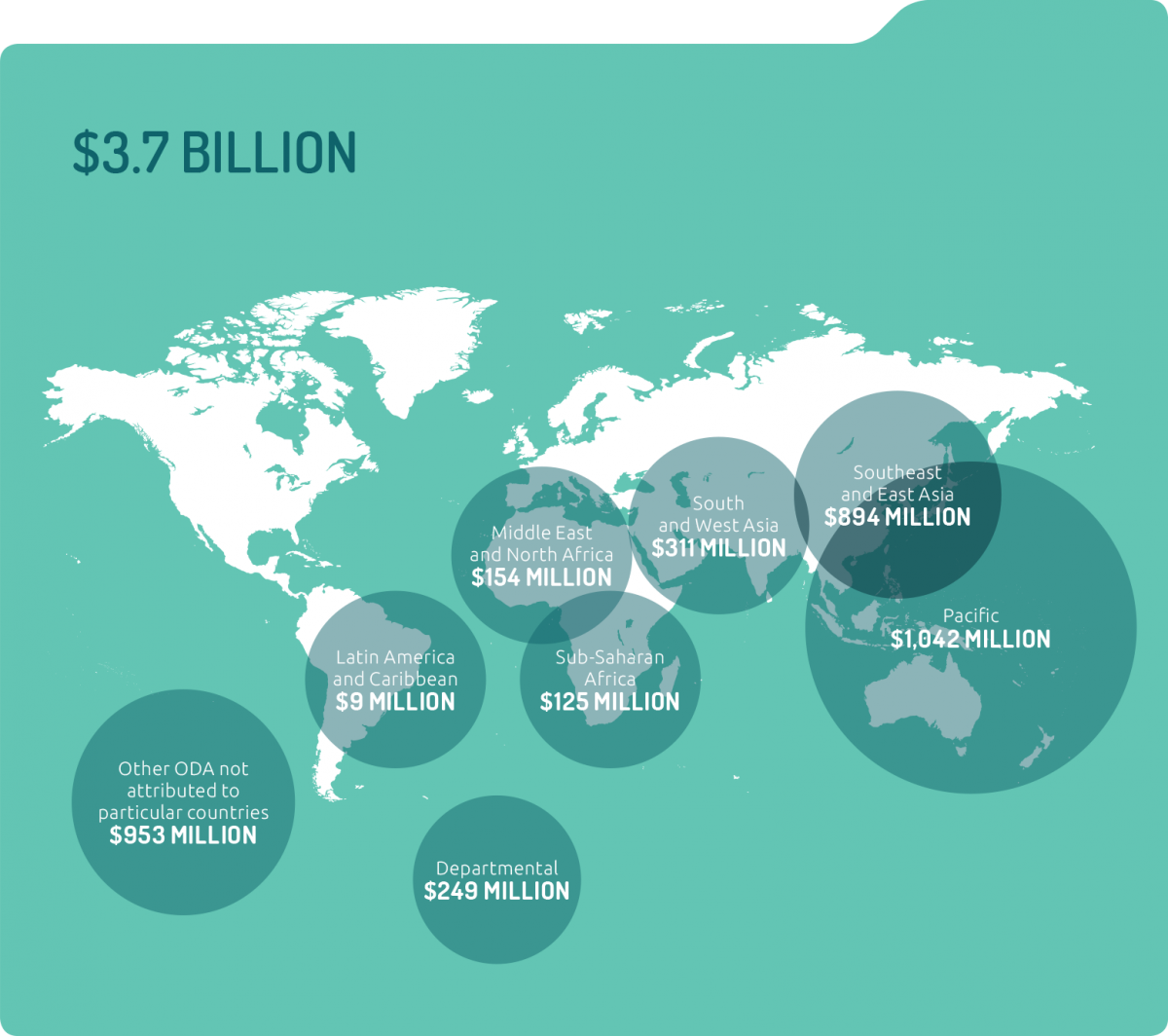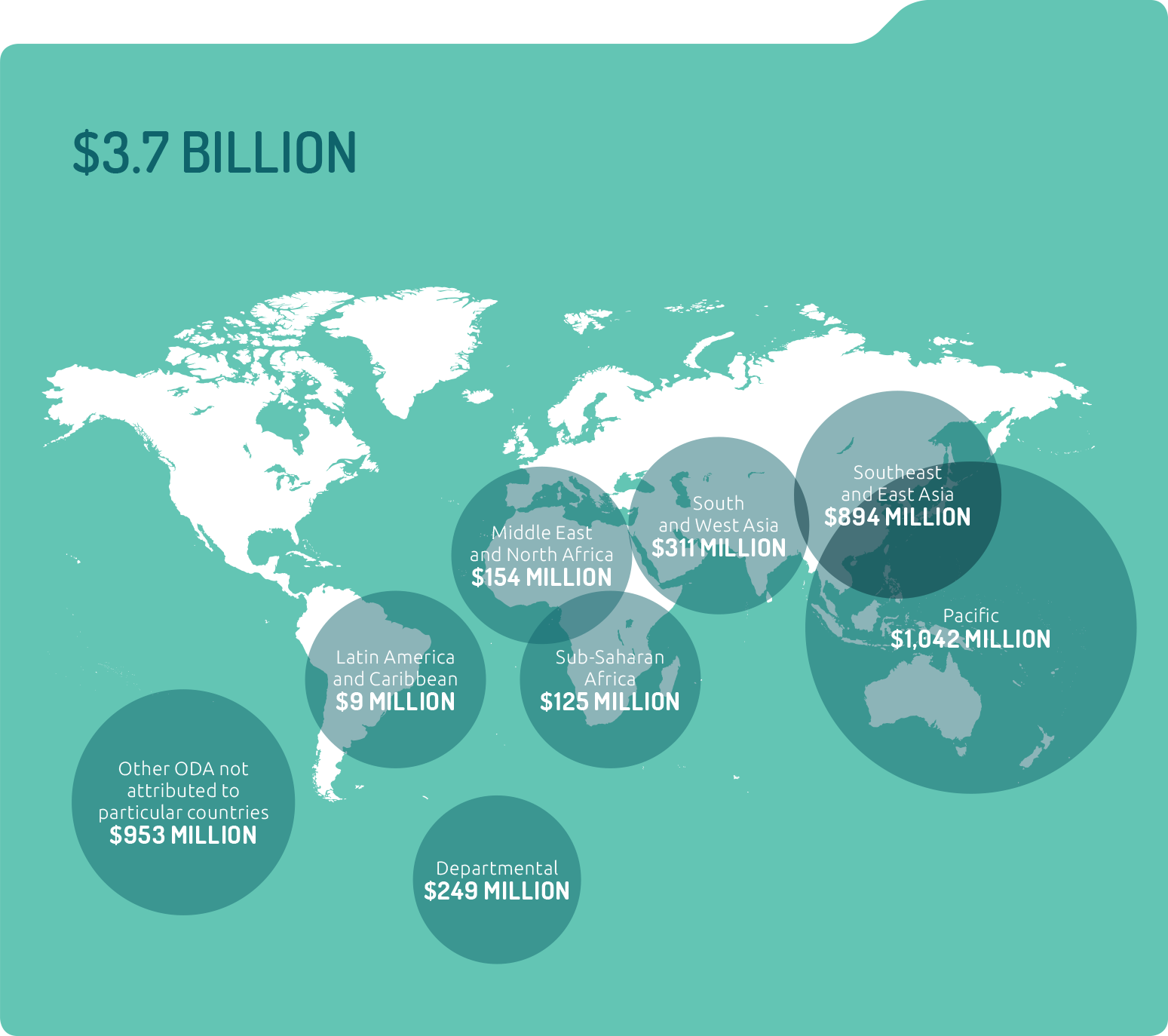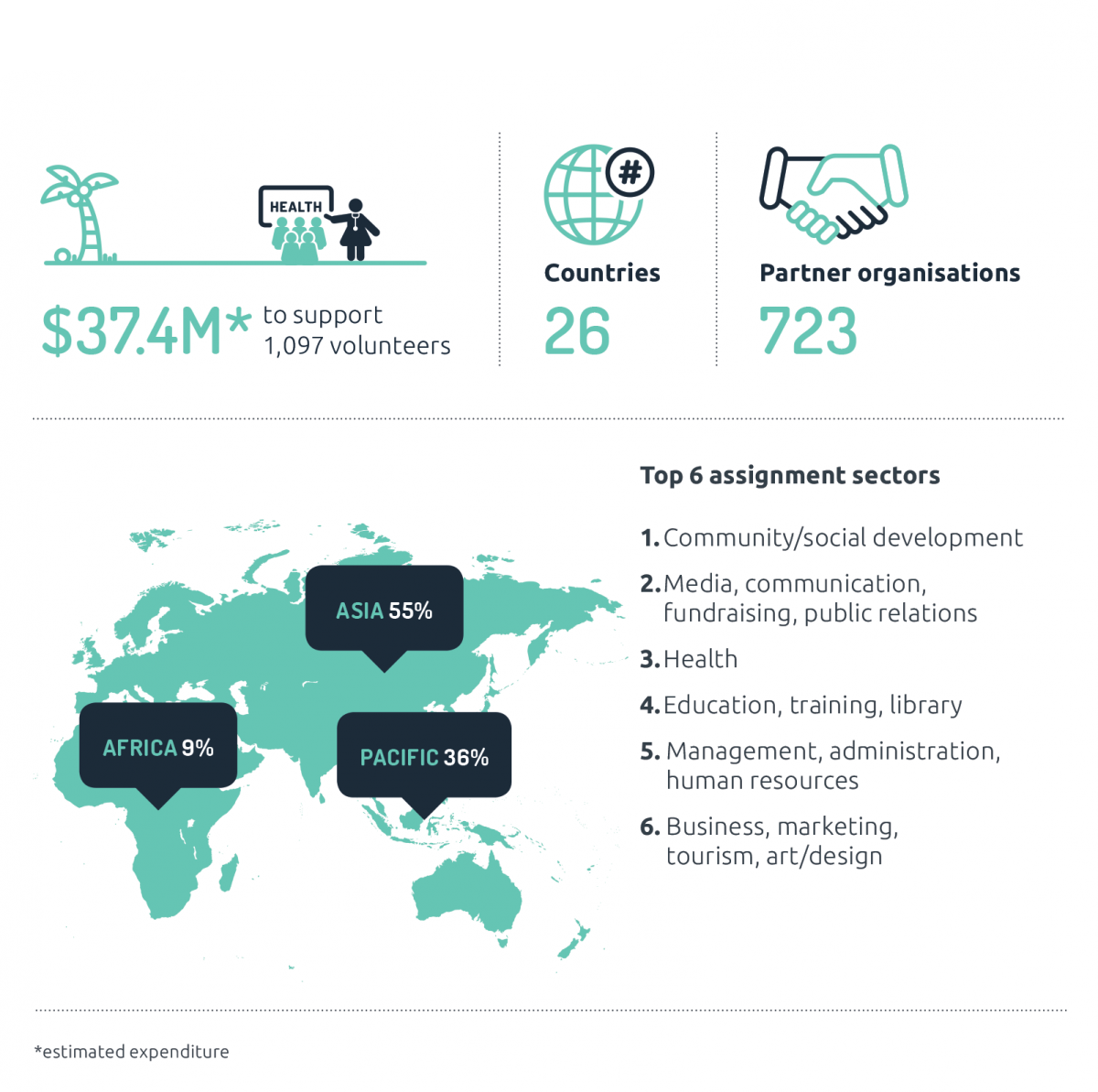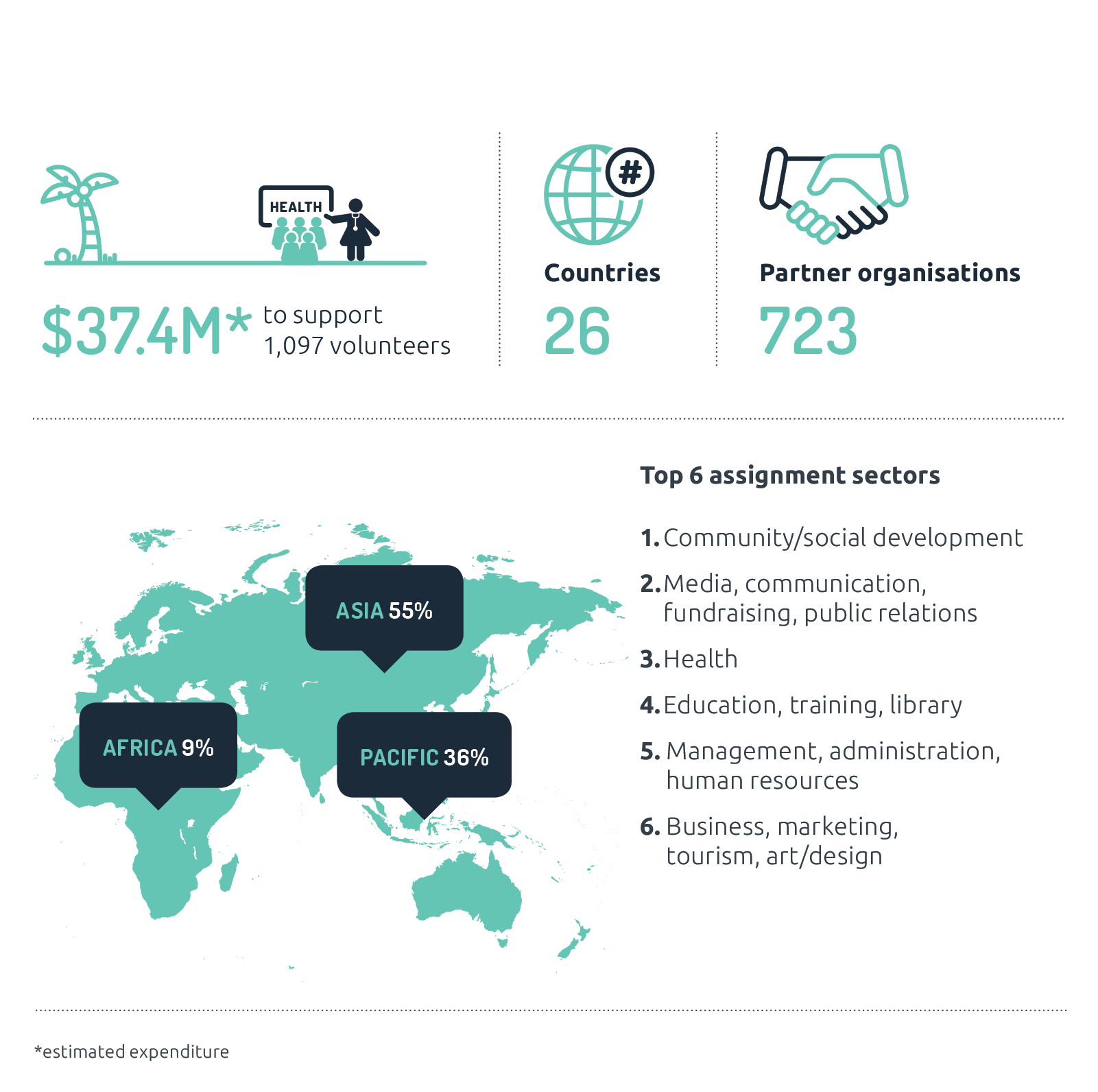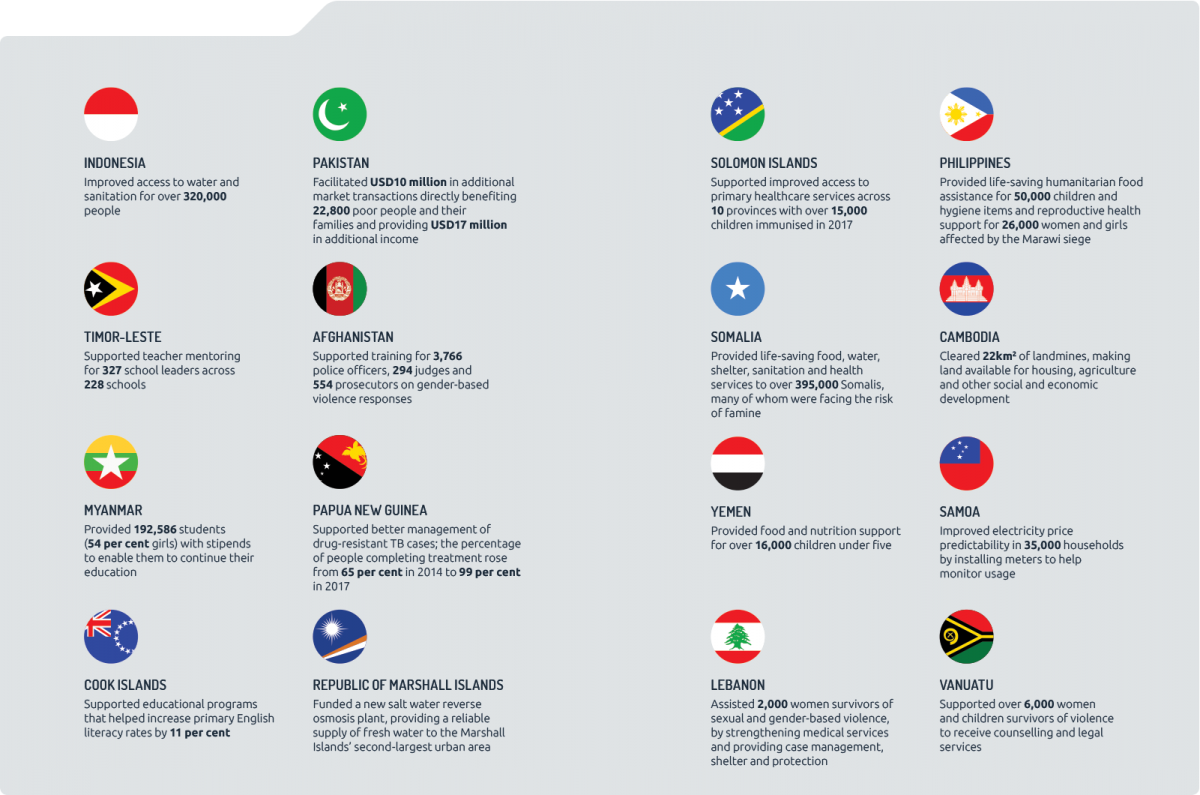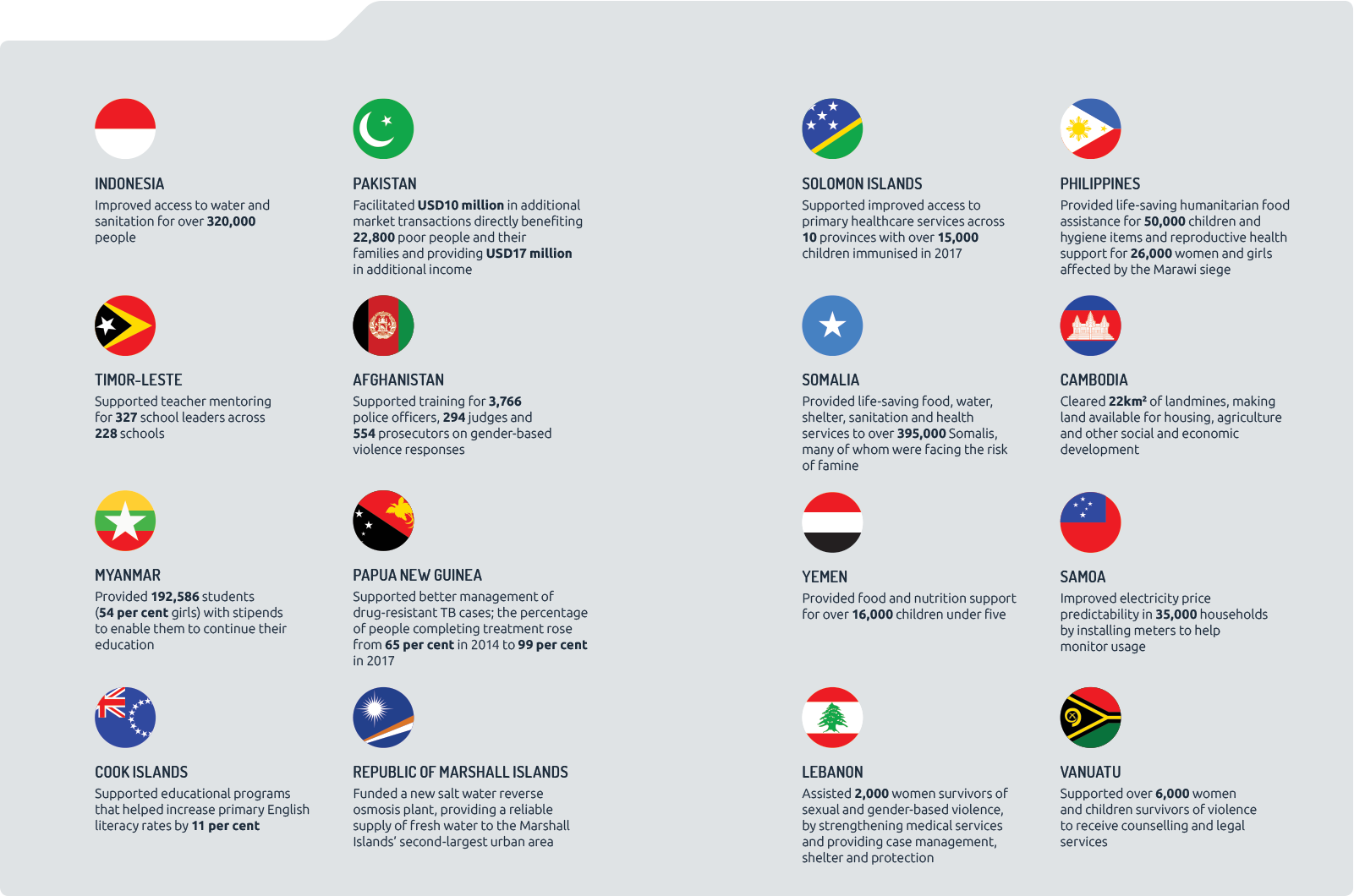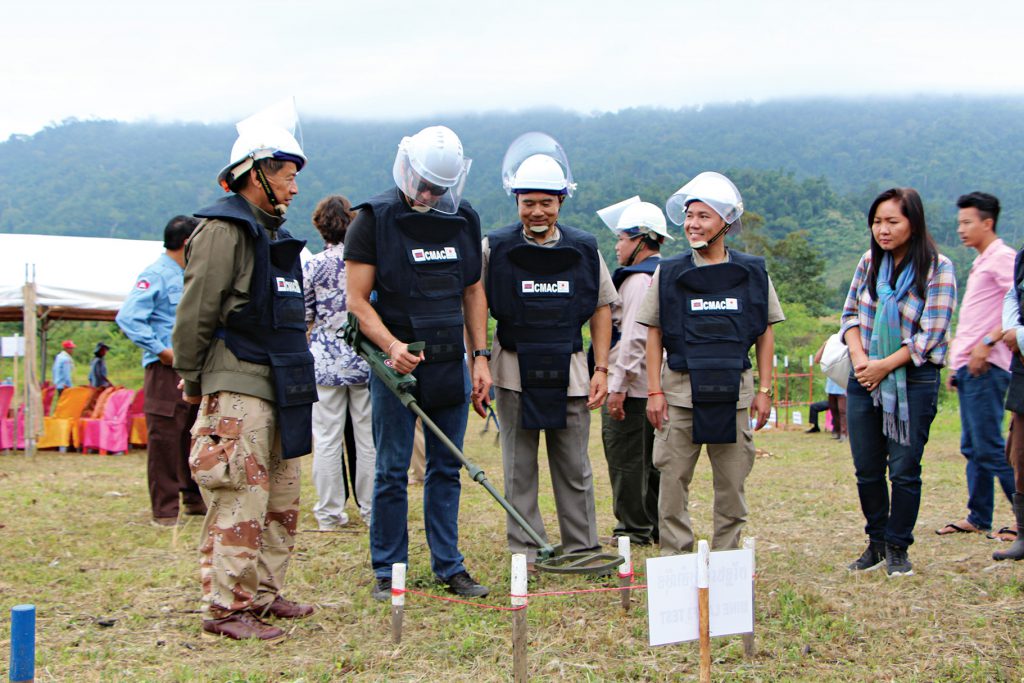In 2017–18 we delivered an estimated $3.7 billion of official development assistance (ODA) and achieved strong results across all priority areas. We implemented aid investment plans for 25 country and regional programs in line with partner government priorities.
The Performance of Australian Aid report for 2017–18 will be published in early 2019 and will provide comprehensive information on results across the program.
In March the OECD Development Assistance Committee released its peer review of Australia’s aid program. It recognised Australia’s advocacy for the interests of small island developing states in the Pacific region and provided a positive assessment of the aid program. It also highlighted our strong approach to gender and performance measurement.
The report made a number of recommendations, including on aid volume, the environment and climate change, the SDGs and our aid capability. These recommendations are being considered.
Our priority sectors
Our aid program has six policy priorities. We are working with partner governments to improve governance, education and health, and to enhance productivity in agriculture, fisheries and water. We have a strong focus on infrastructure and aid for trade, as trade drives growth and job creation. We promote gender equality, social and economic participation for the most disadvantaged, including women and girls, indigenous people and people with disability. We are building resilience through investments in humanitarian assistance, disaster risk reduction and social protection (see p. 105). Recognising that climate change poses a threat to development, we are increasingly tackling climate change across our aid program priorities (see p. 81).
The department provided an estimated $456.1 million during the year to help partner countries respond to health needs and strengthen regional health security (SDG 3: good health and well-being). We supported 30 medical teams to visit 11 Pacific countries where they conducted 2,543 medical consultations and 594 operations.
Our assistance helped improve and embed in government the functioning of the Health Equity Fund system in Cambodia. This system subsidises health care for the poorest Cambodians, with health care provided for 2.64 million cases in 2017, an increase of 340,000 from 2015. We also improved the skills and knowledge of 200 health workers, scientists and researchers across 18 provinces in Papua New Guinea, and strengthened laboratory systems, diagnosis and treatment in the fight against malaria.
In October the Minister for Foreign Affairs launched the $300 million Regional Health Security Initiative. This included establishing the Indo-Pacific Centre for Health Security. It will support research, strengthen partnerships and improve the capacity of regional health systems to help prevent epidemics, strengthen early detection and support rapid, effective responses to disease outbreaks.
Building human capital is essential for countries to realise their economic potential. We invested an estimated $654.2 million during the year to improve access to equitable, quality education (SDG 4: quality education), including scholarships. For example, in Kiribati we helped build a more capable and qualified workforce by investing in the Kiribati Institute of Technology and equipping students to take advantage of opportunities under Australia’s new Pacific Labour Scheme. Through Australia’s role on the Board of the Global Partnership for Education, we helped establish the Multiplier Fund to leverage additional investment for education in 65 developing countries. Within six months of its rollout, the fund had unlocked an additional USD325 million for education.
We also invested an estimated $682.9 million during the year to improve the region’s governance. Better public policy, improved financial management and more accountable and transparent government helps create rules-based and stable investment environments. We supported Indonesia to improve business regulation and practices, making it easier for the private sector to grow.
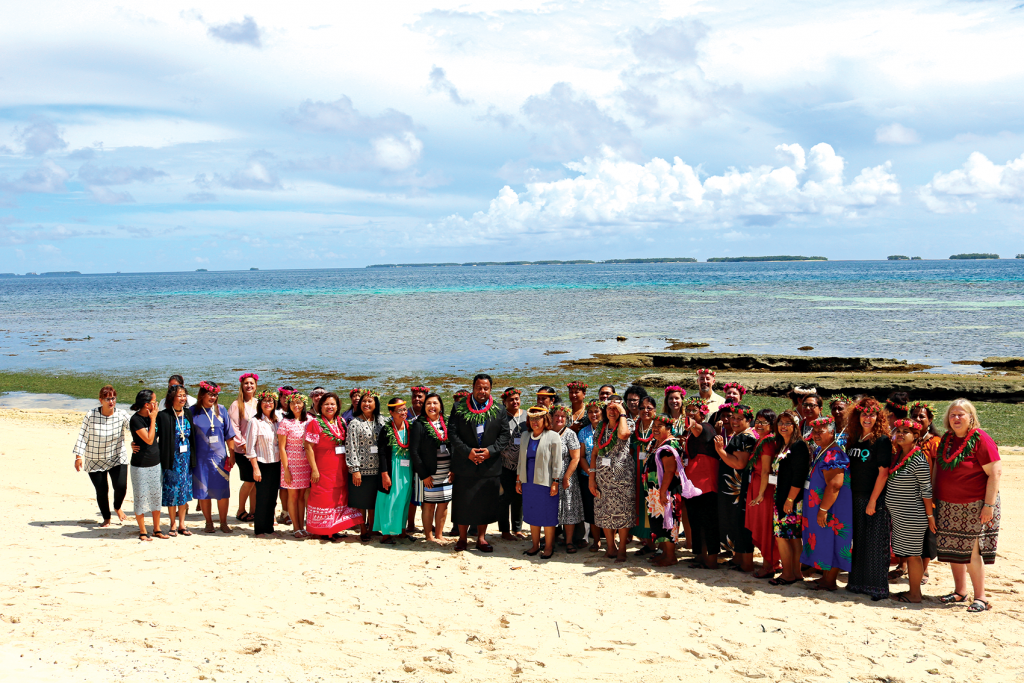
Deputy Head of Mission, Pohnpei, Eliza Woolcock, and Senior Program Designer, Suzanne Gallen, at the Micronesian Women’s Conference in Majuro—funded by Australia’s Pacific Women Shaping Pacific Development Project [DFAT]
Improvements in the business environment helped Indonesia advance 19 places in the World Bank’s 2017 Ease of Doing Business rankings.
During the year we invested an estimated $593.1 million in infrastructure to improve the investment environment and leverage private sector funding (SDG 9: industry, innovation and infrastructure). For example, our membership of the Private Infrastructure Development Group harnessed Australian expertise to help deliver hydropower in Northern India.
We contributed an estimated $248.3 million for agriculture, fisheries and water by strengthening markets, improving productivity and promoting the sustainable use of resources (SDG 2: zero hunger and SDG 6: clean, water and sanitation). In Fiji we invested in storage depots for agricultural goods, as well as flood- and cyclone-proof shelters for seedlings. These initiatives help farmers replant damaged crops and get back to production faster.
Across the aid program, we spent $1.3 billion* on investments that helped promote gender equality and women’s empowerment (SDG 5: gender equality). Gender equality remains a priority issue across the Indo-Pacific. For example, through the Australia–Indonesia Partnership for Gender Equality and Women’s Empowerment—better known as MAMPU—we have helped over 50,000 women to gain a voice through established community networks since 2014. These networks are pivotal in influencing government decisions that benefit women on a large scale. MAMPU local partners advocate for women’s issues at national and sub-national levels in almost 1,000 villages across Indonesia where three million women and girls live. Through Australia’s support, these women have not only gained access to essential government services, but are being empowered to act as agents of change themselves.
Our Gender Equality Fund ($55 million in 2017–18) continues to achieve results in the Indo-Pacific in:
- enhancing women’s voices in decision-making, leadership and peace-building
- promoting women’s economic empowerment
- ending violence against women and girls.
The fund contributed to a Pacific Women Shaping Pacific Development investment of $40.9 million in 2017–18 ($16.5 million from the Gender Equality Fund) to support Pacific women into leadership roles at the community, provincial and national levels. This includes support, through the United Nations Women Markets for Change project, for over 400 women to join market vendor associations in Fiji, Solomon Islands and Vanuatu, helping them increase their bargaining power and influence how markets are managed and made safe.
Leveraging multilateral and private sector engagement
We worked closely with Treasury to secure in-principle agreement for Australia’s contribution to a USD13 billion capital increase at the World Bank, our largest multilateral development partner. This will significantly expand the bank’s lending power over the next decade. The World Bank President said the agreement amongst the 189 shareholders demonstrated confidence in global cooperation and the rules-based order.
Efforts are continuing to ensure the World Bank and Asian Development Bank (ADB) meet their commitment to increase financing to Pacific island countries. For example, we helped develop and implement World Bank and ADB projects to build new and better roads in Papua New Guinea, and to deliver new energy projects in Samoa, Solomon Islands and Tonga.
Our support for UNICEF, United Nations Women and the Office of the High Commissioner for Human Rights helped these organisations to continue work protecting and improving gender equality, children’s education and freedom of expression. We supported reform efforts that encourage United Nations agencies to work more collaboratively on sustainable development, humanitarian and economic programs.
The private sector is an essential partner. With the majority of the world’s capital under private control, engaging the private sector is key to promoting economic development. We collaborated with business in The Business Partnerships Platform to address challenges in the region. We initiated 10 new partnerships during the year, supported by $4.3 million and matched with $5.9 million from partners. These included projects in Sri Lanka where we partnered with Dialog Axiata and Ernst and Young to provide mobile savings and payment technology to rural villages in the north of the country.
The Australian NGO Cooperation Program provided an estimated $128.8 million to 57 NGOs to support more than 450 projects in over 50 countries during the year. These projects were across a range of sectors including education, health, water and sanitation, food security, civil society and economic development.
![Farmers in Bobonaro are improving their production of onions so more local onions are produced and sold in Timor-Leste [TOMAK/Lewti Hunghanfoo] Farmers in Bobonaro improving their production of onions so more local onions are produced and sold in Timor-Leste](../../../wp-content/uploads/2018/10/Image13_CMYK_300dpi.jpg)
